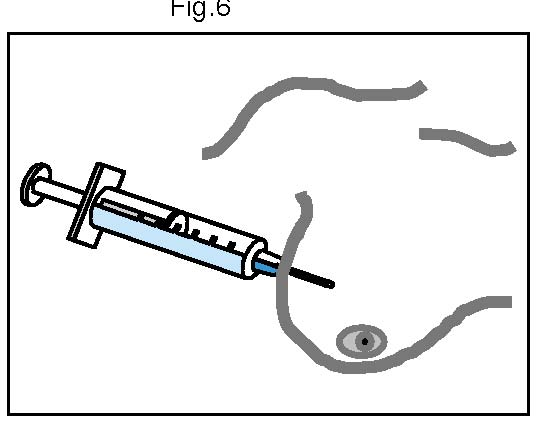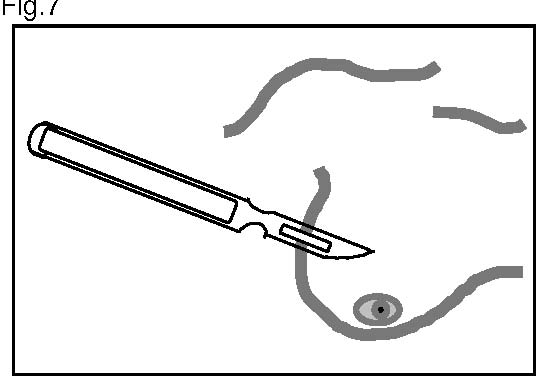|
GENERAL INFORMATION AND SURGERY
INTRODUCTION
Breast cancer is one of the commonest cancers in women in India . It is also one of the curable cancers if detected early. Any woman would dread getting cancer of the breast. Cancer subjects the family to unimaginable emotional stress. If you or someone you know has been diagnosed to have breast cancer it is important that you understand the disease, since ignorance breeds myths. We then have to fight not just the 'CANCER' but also the 'MYTHS'. Revolutions in information technology bombarded us with information about advances in basic and applied sciences. Very few of these are truly medical breakthroughs and they add to the confusion. However, modest but real medical advances have taken place in the last two decades and many more patients are being cured. Needless to say that we are far away from conquering breast cancer. Practical knowledge of the disease and familiarity with treatment options, schedules, side effects etc. will alleviate anxiety and fear to a great extent. During their busy schedules, doctors may not have time to answer all your queries and doubts. This book is an attempt to provide basic Breast Cancer information related to treatment, after-treatment care, rehabilitation and support so that you, as a well-informed patient, can fight the disease with a more realistic and practical approach.
FIGHT CANCER. DO NOT F EAR IT.
GENERAL INFORMATION
-
Normal Breast: The normal breast has many segments called lobules that merge together to give a smooth contour. The nipple areola complex is in the center where ducts from all lobules converge. Sometimes as a normal variation, there are very small rice granule lumps felt in both the breasts with or without pain. These gradually subside and should not cause worry. Breast size and consistency also change with the menstrual cycle and it is important to know how your breasts actually feel on different days. The lumps with pain which wax and wane with menstrual cycles are not cancers. Some lumps appear very suddenly and are classically described as 'here today and not there tomorrow'. These are often seen around the age of forty and are benign cysts. With old age, breasts become lax and wrinkles may appear on the overlying skin. Lumps in women after menopause should never be neglected. Breast tissue extends to the armpit which has ‘lymph glands’ which collect and filter ‘lymph’, a special type of fluid, from breast. These may enlarge in cancer when the cancer cells get trapped in them
-
What is cancer?
Our body is made up of ‘very tiny structures’ called cells. Normally, cells reproduce ‘regularly or systematically' as a part of wear and tear. A tumour develops only when this process becomes uncontrolled. A tumour (lump) can be benign or malignant. Benign tumours do not spread to any other part of the body. A malignant tumour is a true cancer because it has the ability to spread beyond the original site via blood stream or lymphatic system. Dislodged cells reach a new site where they have to overcome resistance offered by your immune system and then form a colony to establish 'metastasis' or 'secondary tumour'.
-
What is a tumour or lump?
Tumour' is a Latin word for any swelling. A lump (tumour) in the breast can occur at any age. It is wise to understand your normal breast and practice what is called breast self examination (discussed later). This technique should be followed by all women after the age of about 30 so that it is possible to understand and detect anything that is unfamiliar. If a lump is noticed in the breast, do not neglect or panic. Discuss it with people close to you and consult a doctor.
-
Is every breast lump a cancer?
No! Only one out of ten breast lumps is a cancer. It is very likely that your lump is benign therefore do not panic. Consult a qualified doctor.
-
Is breast cancer contagious?
No! Living close to a cancer patient or working with a cancer patient does not transmit cancer to others.
-
What causes breast cancer?
The causes of breast cancer are still not fully understood and those that are known can account for only half of all breast cancers. The established risk factors are:
- Women who have had breast cancer in one breast.
- There is a slightly increased risk in women who
-have their first childbirth late in life
-have no children
-had an early menarche
-have a late menopause
-
There is no strong evidence that use of modern contraceptive pills leads to breast cancer.
-
There is evidence that women who breast-fed their babies for at least a year have a lower risk of developing breast cancer.
-
Obesity (overweight) predisposes to breast cancer after menopause.
-
What are the signs of breast cancer?
A lump is the usual presentation of breast cancer. Pain in the breast is a very uncommon symptom. Even healthy women, during their menstrual phases, may find tender lumpiness in their breasts. Following are signs of breast cancer.
Breast : Painless lump
Dimpling of skin over breast
Change in contour of breast
Ulcer (late stage)
Nipple: Rash or ulcer
Indrawing of nipple
Blood-stained discharge
Armpit: Lump or fullness (late stage)
Arm : Swelling (late stage)
-
How does the doctor diagnose breast cancer?
When you see a doctor for a lump in the breast, he would examine your breast thoroughly. It may not always be possible for him to say what the lump is? He may run some tests to be sure about the character of the lump.
The tests commonly used are –
a. Fine Needle Aspiration Cytology (FNAC) :

-
This involves taking out a few cells from the lump with a thin needle and examining them under a microscope. Pain associated with this test is similar to that caused by an injection.
b. Biopsy:
-
-
This is usually done under local anaesthesia wherein a small part of the lump is taken out for examination. This can be done with the help of a thick hollow needle or by making a small cut on the breast. Rarely, even after this procedure, it may not be possible to find out the nature of the lump. The lump may then have to be removed totally either under general anaesthesia or local anaesthesia and sent for examination. Most breast cancers are diagnosed by FNAC and/or biopsy, both being out-patient procedures. A definitive diagnosis obtained by either procedures allows your doctor to discuss the choice of treatment and plan a course of action for management of your cancer. c. Mammography: This is a special type of X-ray of the breast to detect breast lumps. It allows your doctor to assess the extent of tumour in the affected breast and ascertain whether there is any abnormality in the opposite breast. The procedure involves mild compression of the breasts followed by exposure to x-rays. It only causes slight discomfort, which disappears immediately after the procedure. Sometimes a mammography is supplemented with sonography of the breast. Both the tests are useful to detect tumour and its extent in your breast but they do not offer a definitive diagnosis as is done by FNAC or a biopsy. d. Your doctor may sometimes need to obtain a definitive diagnosis while you are under anaesthesia. In that case, he would remove a part or whole of the tumour and send it for pathological examination before deciding upon the final surgical treatment. This is called frozen-section examination. It is uncommon to resort to such a procedure but may be inevitable in some situations. e. Other tests:  The doctor may also ask for other tests like a chest X-ray, abdominal sonography, bone scan and various other X-rays of the bones. These are required to see if the cancer has spread. Abdominal sonography is a painless procedure to view the abdomen. Bone scan involves injecting a small quantity of radioactive drug in the blood and scanning the body after 2-3 hours. It may take a few days to get an appointment for these tests but there should not be inordinate delay. Do not be terribly perturbed if your doctor does not order these tests since these tests are not very helpful in women whose tumours have been diagnosed early. The doctor may also ask for other tests like a chest X-ray, abdominal sonography, bone scan and various other X-rays of the bones. These are required to see if the cancer has spread. Abdominal sonography is a painless procedure to view the abdomen. Bone scan involves injecting a small quantity of radioactive drug in the blood and scanning the body after 2-3 hours. It may take a few days to get an appointment for these tests but there should not be inordinate delay. Do not be terribly perturbed if your doctor does not order these tests since these tests are not very helpful in women whose tumours have been diagnosed early.
-
What are the stages of breast cancer?
Breast cancer has been divided into four stages; but it is classified into three categories for the purpose of planning treatment:
(a) Early breast cancer - where the cancer is limited to the breast and lymph glands in the armpit. The primary aim of treatment in early breast cancer is to cure as well as conserve the breast. Surgery is the first line of treatment in this stage. Supplementary hormone therapy, chemotherapy, and radiotherapy may be required later.
(b) Locally advanced breast cancer - where the cancer has advanced but is still confined to the breast and the lymph glands. The doctor may first like to give chemotherapy (discussed later) to shrink the lump and then operate. Hormone therapy and radiotherapy are also mandatory.
-
What are the various treatment options?  The doctor chooses the treatment modality after many considerations like stage of disease, logistics of treatment implementation and your choices. Hence two patients in the same stage may receive different treatments. At present, we have four established modes of treatment, aiming firstly to cure and secondly to improve quality of life – The doctor chooses the treatment modality after many considerations like stage of disease, logistics of treatment implementation and your choices. Hence two patients in the same stage may receive different treatments. At present, we have four established modes of treatment, aiming firstly to cure and secondly to improve quality of life –
-
- Surgery
- Radiotherapy
- Hormonal therapy
- Chemotherapy
It would be unfair to say that all this is very simple and that we have conquered cancer, but we have definitely been able to cure many of them, control the disease in others and we are able to give a comfortable life to all patients. If you have any questions about your own treatment don't be afraid to ask your doctor or hospital nurse. It is always better that you make a list of your queries before you see the doctor. Treatment varies with stage, age, pathology, economic status etc. Hence, do not compare your treatment with others. Ensure that you have been thoroughly counseled regarding surgical options, chemotherapy, and radiotherapy by trained counseling nurses. If not then ask your doctor. You can also get valuable advice and support from patient groups like the V C are organisation at
TataMemorialHospital .
-
Should I be a part of a research trial?
No cancer treatment modality to date has resulted in cure of all treated patients. Continuing research is being conducted the world over to evolve more effective ways to treat the disease. These are called clinical trials. You should be aware that the standard treatment that has been offered to you is the ready harvest of selfless participation by patients of yesteryears. Your doctor will tell you about the trials in which you can participate prior to obtaining your consent. Your participation in a trial is a voluntary but invaluable contribution to advancement of medical science, which will result in improved prospects for cancer patients in future. All trials offered to you at Tata Memorial Hospital have passed through the rigorous review of the scientific and ethics committees. They have been found to be of no undue hazard to you, and at the same time address important questions of relevance to patient care.
SURGERY
Surgery or operation forms the mainstay of treatment of breast cancer. Surgery involves removal of the cancerous lump with either preservation or complete removal of your breast.
-
What is breast conservation?
In breast conservation only the lump in the breast is removed. The lymph nodes of the armpit are removed through a separate incision. The smaller the lump in the breast, the higher the possibility of this option being offered by the doctor. It is mandatory to take radiation therapy following breast-conserving surgery. We prefer to give radiation therapy following breast preservation at Tata Memorial Hospital therefore you should be prepared to stay in Mumbai for 6 weeks. Details of radiotherapy are discussed later. Discuss this option with your doctor.
-
What is modified radical mastectomy ( MRM)?
This involves removal of the entire breast and the lymph nodes of the armpit. Do not be unduly concerned if your breast can’t be preserved because one should not compromise on the extent of removal of the cancer. If you can not come to terms with losing your breast, discuss with your doctor about the possibility of other options like primary chemotherapy or immediate reconstruction following partial mastectomy. The need for radiotherapy after conservation is universal but that after mastectomy is uncommon.
-
Is there any way the breast can be reconstructed mastectomy ?
Cosmetically and socially acceptable breast mound can be surgically reconstructed after modified radical mastectomy. There are various re-constructive plastic surgery procedures that can reconstruct your breast mound. The surgery involves utilization of your muscle on the back or abdomen to reconstruct a breast. This surgery may take 5 to 6 hours and you may have to stay in hospital for 2 to 3 weeks. Breast reconstruction can also be done by implantation of 'silicon prosthesis'. If you are inclined you should discuss all these choices with the doctor without inhibition.
-
What is an external Breast Prosthesis?
It is possible to have artificial breast (prosthesis). These prostheses can either be worn externally (these are fitted on the bra) or a special type of prosthesis can be surgically implanted underneath your skin so as to give the mound. The only limitation of these internal prostheses is that they are costly and may not be a 100% match for the normal side.
-
Is complete removal breast superior to breast conservation?
No! Preservation of breast is an equally effective surgical modality as compared to complete removal of breast provided radiation therapy is given afterwards. It is a myth that breast conservation leads to re-occurrence of disease. In early breast cancer 5-7% of women experience local re-occurrence both following breast conservation or mastectomy.
-
How long do I need to stay in hospital?
You will usually be admitted one day prior to surgery and you will be discharged with proper instructions a day or two after your operation. You may have to stay longer occasionally.
-
Does surgery cause too much pain?
No! Today’s advances in the techniques of anaesthesia have made surgery painless, smooth and safe. You will be admitted one day before operation. You will be taken into the Operation Theater on a stretcher half an hour before surgery. A nurse will give you a sedative (injection) before you are shifted into the Operation Theater. You should not wear any metallic ornaments during surgery. You would be put to sleep by an injection and your doctor will perform surgery without you experiencing any pain.
-
What happens immediately after surgery?
Within a few hours of operation you will be shifted to your ward. You will receive intravenous fluids after surgery. You will feel a bit drowsy and nauseated for a few hours. Your intake by mouth would start after about 6 hours of surgery. You may have some pain, which will be taken care of by drugs. There will be a drainage tube coming out of your operation site, which is meant to suck out blood and fluid collected in the operated area. The Doctor or nurse will explain to you in detail about the functioning of the suction bottle. If you have any problem, ask your doctor or the ward nurse.
-
What happens on the day after the surgery?
Intravenous fluid will be stopped.
You can start taking normal diet.
Start moving around
Learn the exercises: The physiotherapist, breast nurse or doctor will teach you exercises, which will have to be done religiously (see later). If you do not perform these exercises, there is a chance that the arm movements of the operated side will be severely restricted and remain so for ever. In the initial phase you may have pain while exercising but do not stop your exercises. In a day or two the pain will subside.
-
What about pain that may remain for a few months?
You may have some tingling and abnormal sensation in your armpit and arm. Ignore them. These are due to the nerves having being cut during removal of lymph glands from your armpit. This sensation or lack of it may progress into pain or hypersensitivity of skin in a fortnight and slowly abates after a few months.
-
Precautions to take after leaving hospital
You have to continue your medicines for a week while at home.
You will be discharged from the hospital with the drainage tubes and the collecting device. Seek help of your doctor or nurse to learn to use the suction system before you leave the hospital. Sometimes, these tubes may get blocked and leakage of fluid may occur from around the drain tube. You should be able to recognize this and return to the hospital for attention.
Continue the exercises without fail.
Take care, not to wet the operated area for an initial few days and do not forget to receive instructions about bathing from your doctor. Take care that the drain tube does not get pulled out. It is best to carry the collecting device in a shoulder bag so that your daily activities are not hampered (including movement in and outside your house). Some women strap it to their tummy. You may do what ever is convenient to you.
See your doctor as per scheduled appointment.
The stitches and the tubes will be removed in about twelve to fourteen days. After the removal, for about a month or longer, some fluid may collect in the wound. This is harmless but it may have to be taken out intermittently with the help of a needle and syringe by a doctor. This collection is called 'seroma'. Don’t confuse it with reappearance of lump and do not worry! Just continue with your exercises.
|






